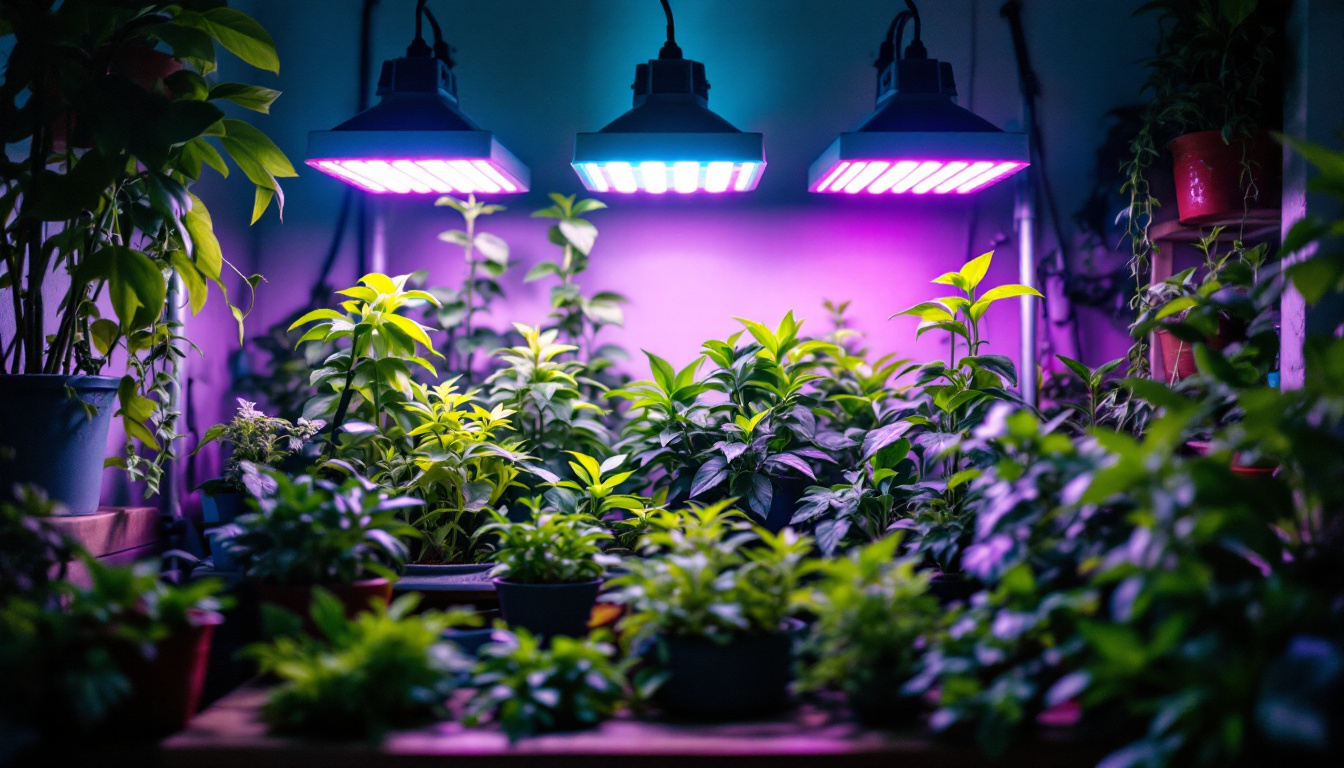

In the rapidly evolving world of horticulture, grow lights have emerged as a vital component for successful indoor farming and greenhouse operations. Lighting contractors play a crucial role in designing and implementing effective lighting solutions, yet there are several aspects of grow lights that are frequently overlooked. Understanding these nuances can not only enhance the quality of service provided but also lead to improved outcomes for clients. This article delves into the essential considerations that lighting contractors should keep in mind when working with grow lights.
Before diving into the intricacies of grow lights, it is essential to grasp the fundamental principles that govern their operation. Grow lights are designed to mimic natural sunlight, providing plants with the necessary spectrum of light for photosynthesis. However, not all grow lights are created equal, and a variety of factors must be considered to ensure optimal plant growth.
There are several types of grow lights available on the market, each with its unique advantages and disadvantages. The most common types include LED, fluorescent, and high-intensity discharge (HID) lights. LEDs are favored for their energy efficiency and longevity, while fluorescent lights are often used for seedlings and clones due to their lower heat output. HID lights, on the other hand, provide intense light but can generate significant heat, necessitating careful management in enclosed spaces.
Understanding the specific needs of the plants being cultivated is crucial when selecting the appropriate type of grow light. For instance, flowering plants may require different light spectra compared to leafy greens. Lighting contractors should be well-versed in these distinctions to provide tailored recommendations to their clients. Additionally, the placement and distance of the lights from the plants can significantly impact growth; too far away may result in insufficient light, while too close can cause heat stress or light burn. Therefore, a comprehensive understanding of both the light source and the plant’s requirements is essential for successful cultivation.
The light spectrum plays a pivotal role in plant growth, influencing everything from germination to flowering. Plants primarily utilize blue light for vegetative growth and red light for flowering. However, the importance of other wavelengths, such as ultraviolet (UV) and far-red light, should not be underestimated.
Contractors must educate their clients about the significance of providing a balanced light spectrum. Many growers mistakenly believe that more light is always better, leading to the use of lights that may not provide the optimal spectrum for their specific plants. By understanding the nuances of light spectrum, contractors can help clients achieve better growth rates and higher yields. Furthermore, the timing and duration of light exposure are also critical factors; for example, many plants benefit from a period of darkness to simulate natural day-night cycles, which can enhance flowering and fruiting processes. This knowledge empowers growers to create a more controlled environment that closely resembles the plants’ natural habitat, ultimately leading to healthier and more productive crops.
Despite the wealth of information available about grow lights, several misconceptions persist in the industry. Addressing these misconceptions can help lighting contractors provide more effective solutions and improve client satisfaction.
One of the most prevalent myths is that increasing light intensity will always lead to better plant growth. While light is indeed a critical factor, it is essential to strike a balance. Excessive light can lead to light stress, causing plants to become leggy or even burn. Understanding the specific light requirements of different plants is key to avoiding this common pitfall.
Lighting contractors should conduct thorough assessments of the growing environment and the specific crops being cultivated. This includes considering factors such as the distance between the lights and the plants, as well as the duration of light exposure. By tailoring light intensity and duration to the needs of the plants, contractors can help clients achieve optimal results. Additionally, it’s important to recognize that different growth stages—such as germination, vegetative, and flowering—require varying light conditions. For instance, seedlings thrive under lower light levels, while flowering plants may benefit from higher intensities. This nuanced understanding can greatly enhance the success of a growing operation.
Another misconception is that all grow lights function similarly. In reality, the technology behind different types of grow lights can vary significantly. For example, LED grow lights often come with adjustable spectrums and dimming capabilities, allowing for greater customization in lighting setups. In contrast, traditional fluorescent and HID lights may lack these features.
Lighting contractors should stay informed about the latest advancements in grow light technology. By understanding the differences between various products, contractors can make informed recommendations that align with their clients’ specific needs and goals. Moreover, the energy efficiency of grow lights is an increasingly important consideration. LEDs, for instance, not only consume less energy but also produce less heat, which can reduce cooling costs in controlled environments. This efficiency can lead to significant long-term savings for clients, making it a vital aspect of any lighting proposal. Furthermore, understanding the color spectrum emitted by different lights can help contractors guide clients in selecting the right type for their specific plants, ensuring that they receive the optimal wavelengths for photosynthesis and growth.
When designing and implementing grow light systems, lighting contractors must take several key factors into account. These considerations can greatly impact the effectiveness of the lighting solution and the overall success of the grow operation.
Energy efficiency is a critical concern for many growers, particularly those operating on a large scale. The cost of electricity can significantly impact the profitability of a grow operation. Therefore, selecting energy-efficient lighting solutions, such as LED grow lights, can lead to substantial savings over time.
Contractors should conduct energy audits to help clients understand their current energy consumption and identify areas for improvement. By recommending energy-efficient lighting options, contractors can not only enhance their clients’ bottom line but also contribute to more sustainable growing practices.
Heat management is another crucial consideration when working with grow lights. Excessive heat can lead to a range of issues, including plant stress and increased cooling costs. Different types of grow lights generate varying amounts of heat, and understanding these differences is essential for effective system design.
Contractors should assess the growing environment and consider factors such as ventilation and cooling systems. Implementing proper heat management strategies can help create a more stable growing environment, ultimately leading to healthier plants and higher yields.
Proper installation of grow lights is vital for achieving optimal results. Lighting contractors should adhere to best practices to ensure that the lighting system functions effectively and efficiently.
The placement of grow lights can significantly impact their effectiveness. Lights should be positioned at the appropriate distance from the plants to ensure they receive the right amount of light without causing stress. This distance can vary depending on the type of light used and the specific plants being grown.
Contractors should provide clear guidelines to clients on how to adjust light placement as plants grow. Regular monitoring and adjustments may be necessary to maintain optimal light conditions throughout the growing cycle.
Safety is paramount when installing grow lights. Contractors must ensure that all electrical components are properly wired and meet safety standards. This includes using appropriate wiring methods, circuit breakers, and grounding techniques to prevent electrical hazards.
Additionally, contractors should educate clients about the importance of regular maintenance checks. Ensuring that all components are functioning correctly can prevent potential issues and extend the lifespan of the lighting system.
The field of grow lighting is constantly evolving, with new technologies and trends emerging regularly. Staying informed about these developments can help lighting contractors remain competitive and provide the best possible solutions to their clients.
One of the most exciting trends in grow lighting is the rise of smart lighting systems. These systems utilize advanced technology to automate lighting schedules, adjust light spectra, and monitor environmental conditions. By integrating smart technology, contractors can offer clients a more sophisticated and efficient lighting solution.
Smart lighting systems can also provide valuable data insights, allowing growers to make informed decisions based on real-time information. This level of automation can lead to improved plant health and increased yields, making it an attractive option for many growers.
As sustainability becomes increasingly important in the agricultural sector, lighting contractors should consider eco-friendly practices when designing grow light systems. This includes recommending energy-efficient products, utilizing renewable energy sources, and encouraging practices that reduce waste.
By promoting sustainable lighting solutions, contractors can not only meet the demands of environmentally conscious clients but also contribute to a more sustainable future for the industry as a whole.
Grow lights are a critical component of modern horticulture, and lighting contractors play a vital role in ensuring their effective implementation. By understanding the various types of grow lights, addressing common misconceptions, and considering key factors such as energy efficiency and heat management, contractors can provide valuable solutions to their clients.
Staying informed about future trends, including smart lighting systems and sustainable practices, will further enhance the ability of lighting contractors to meet the evolving needs of the industry. By prioritizing education and innovation, contractors can help their clients achieve optimal results in their growing operations.
In a field that is continually advancing, the importance of thorough knowledge and careful consideration cannot be overstated. Lighting contractors who embrace these principles will not only improve their service offerings but also contribute to the success of their clients in the dynamic world of indoor farming.
Ready to elevate your lighting solutions with the latest in grow light technology? Look no further than LumenWholesale. We provide lighting contractors with the highest quality, spec-grade lighting products at prices that can’t be beaten. Our selection is designed to meet the most rigorous industry standards, ensuring you deliver reliable and high-performance lighting for all your horticultural projects. Plus, with free shipping on bulk orders, you can obtain premium lighting solutions at the best value without any hidden costs. Don’t compromise on quality or affordability. Explore our wholesale lighting options today and experience the difference with LumenWholesale.

Discover essential insights into construction and portable lighting tailored for lighting contractors.

Discover why purchasing track lighting in bulk from local distributors might not be the best decision.

Discover essential insights for lighting contractors in our comprehensive guide on outdoor house lights.

Illuminate your knowledge with our comprehensive guide on outdoor stairway lighting.
Get notified when NEW deals are released.
Optimize your budget with wholesale discounts.
Only top-quality, specification-grade lighting products.
No additional costs at checkout - what you see is what you pay.
We understand the unique needs of contractors.